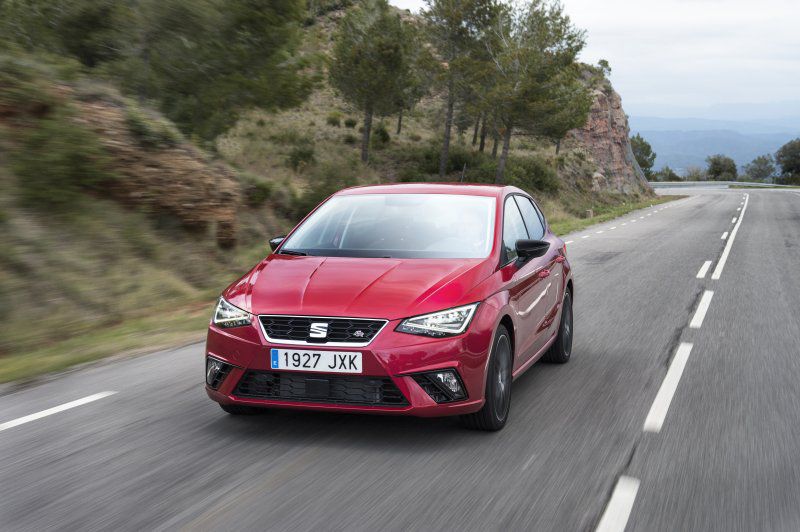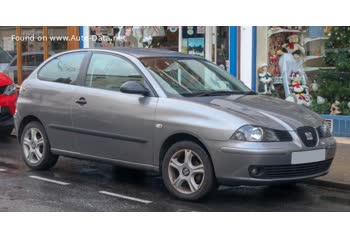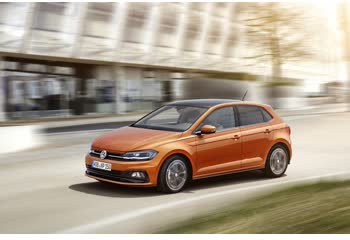Everything you need to know about specifications and performance - Seat Ibiza 2019 - 1.0 TGI (90 Hp) CNG

Overview:
What is the engine capacity of a Seat Ibiza 2019?
The engine capacity of the Seat Ibiza 2019 is 999.
Seat Ibiza 2019 How many horsepower?
The engine power of the Seat Ibiza 2019 is 90 Hp @ 4500-5800 rpm..
What is the Seat Ibiza 2019 engine?
Seat Ibiza 2019 engine is DBYA. (Click to see other cars using the same engine)
How much gasoline does a Seat Ibiza 2019 consume?
The Seat Ibiza 2019 consumes 3.3 kg/100 km liters of gasoline per 100 km
General:
Brand: Seat
Model: Ibiza
Generation: V
Modification (Engine): 1.0 TGI (90 Hp) CNG
Start of production: 2019
End of production: June, 2021
Powertrain Architecture: Internal Combustion Engine
Body type:Hatchback
Seats: 5
Doors: 5
Engine:
Engine systems: Start & Stop System
Power: 90 hp @ 4500-5800 rpm.
Power per litre: 90.1 hp/l
Torque: 160 nm @ 1900-3500 rpm.
Engine Model/Code:DBYA
Engine displacement: 999
Number of cylinders: 3
Engine configuration: Inline
Number of valves per cylinder: 4
Fuel injection system: Direct injection
Engine aspiration: Turbocharger
Engine oil capacity: 4 l
Coolant: 10 l
Engine layout: Front, Transverse
Cylinder Bore: 74.5 mm
Piston Stroke: 76.4 mm
Compression ratio: 10.3:1
Performance:
Combined fuel consumption (WLTP) (CNG): 3.9-4.0 kg/100 km
Fuel Type: Petrol / CNG
Fuel consumption (economy) - urban: 4.4 kg/100 km
Fuel consumption (economy) - extra urban: 2.7 kg/100 km
Combined fuel consumption (WLTP): 3.9-4.0 kg/100 km
Fuel consumption (economy) - urban (CNG): 4.4 kg/100 km
Fuel consumption (economy) - extra urban (CNG): 2.7 kg/100 km
Fuel consumption (economy) - combined (CNG): 3.3 kg/100 km
Fuel consumption (economy) - combined: 3.3 kg/100 km
Emission standard: Euro 6 DG
Acceleration 0 - 100 km/h: 12.1 sec
Acceleration 0 - 62 mph: 12.1 sec
Maximum speed: 180 km/h
Weight-to-power ratio: 13.1 kg/Hp, 76.1 Hp/tonne
Weight-to-torque ratio: 7.4 kg/Nm, 135.4 Nm/tonne
Acceleration 0 - 60 mph: 11.5 sec
Space:
Kerb Weight (kg): 1182
Max. weight (kg): 1690
Max. roof load: 75 kg
Max load (kg): 508
Trunk (boot) space - maximum: 1072 l
Trunk (boot) space - minimum: 262 l
Fuel tank capacity: 9 l
CNG cylinder capacity: 13.8 kg
dimensions:
Length: 4059 mm
Width: 1780 mm
Height: 1444 mm
wheelbase: 2564 mm
Width including mirrors: 1942 mm
Front track: 1525 mm
Rear (Back) track: 1505 mm
Front overhang: 796 mm
Rear overhang: 699 mm
Minimum turning circle (turning diameter): 10.6 m
Powertrain, Suspension and Brakes:
Drivetrain Architecture: The Internal combustion Engine (ICE) drives the front wheels of the vehicle.
Drive wheel: Front wheel drive
Number of gears and type of gearbox: 6 gears, manual transmission
Front brakes: Ventilated discs
Rear brakes: Disc
Assisting systems: ABS (Anti-lock braking system)
Steering type: Steering rack and pinion
Power steering: Electric Steering
Tires size: 185/65 R15; 195/55 R16; 215/45 R17
Wheel rims size: 5.5J x 15; 6.5J x 16; 7J x 17; 7J x 18
See also

Other generation.
Its production began in 2002 until 2006

Same engine. (DBYA).
Its production began in 2019 until 2021

Same engine. (DBYA).
Its production began in 2021 until Now

Same engine. (DBYA).
Its production began in 2021 until 2023

Write a comment